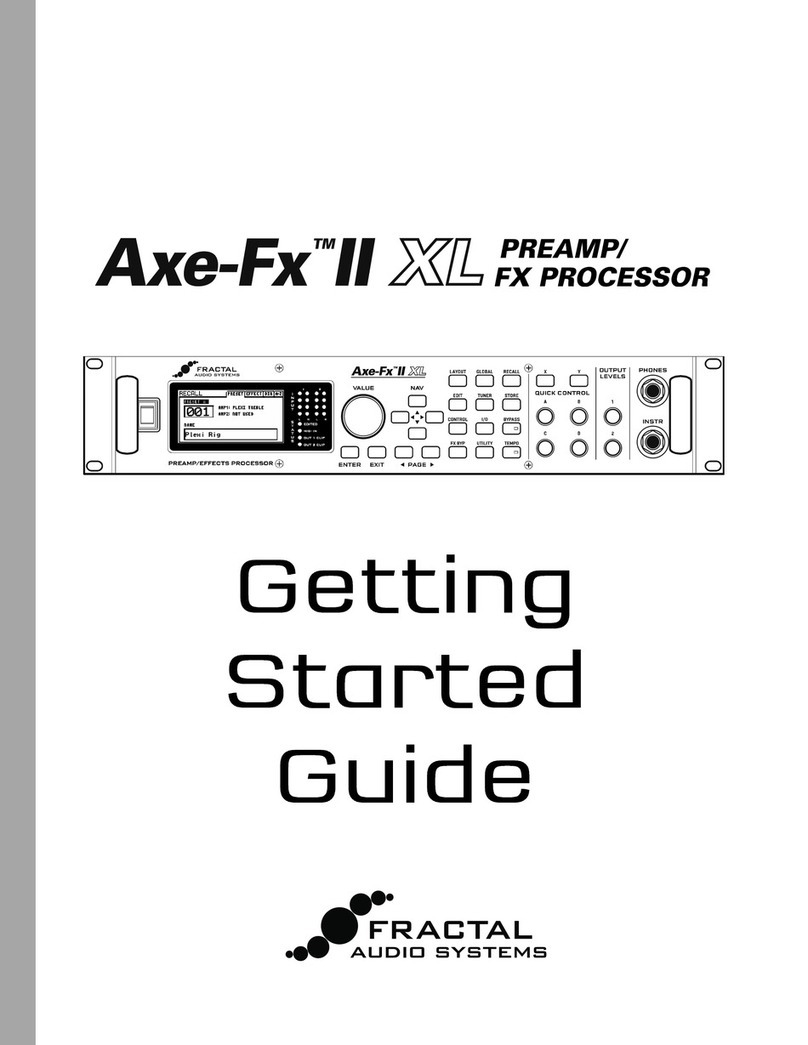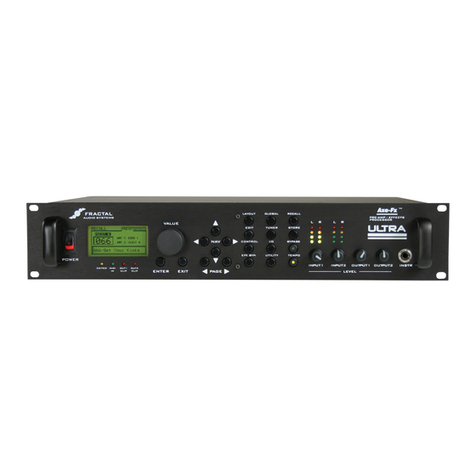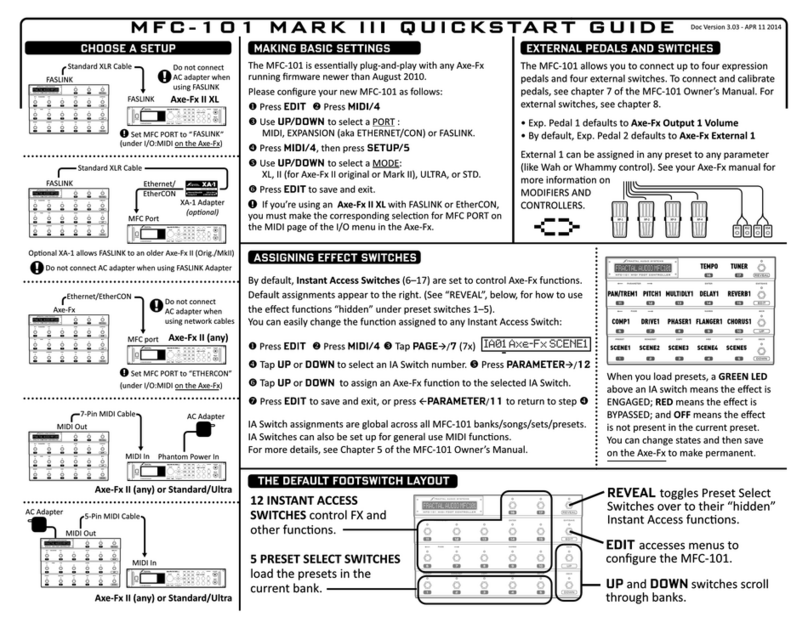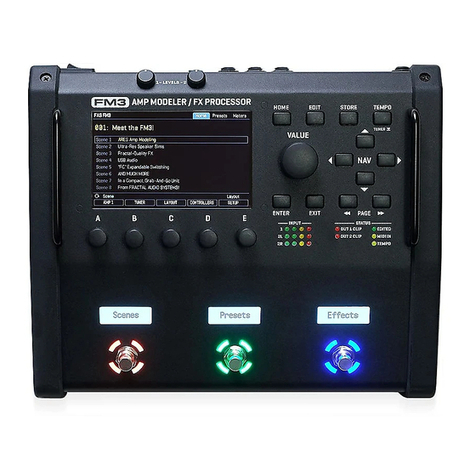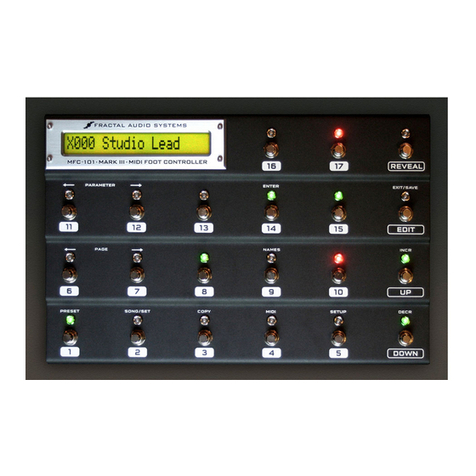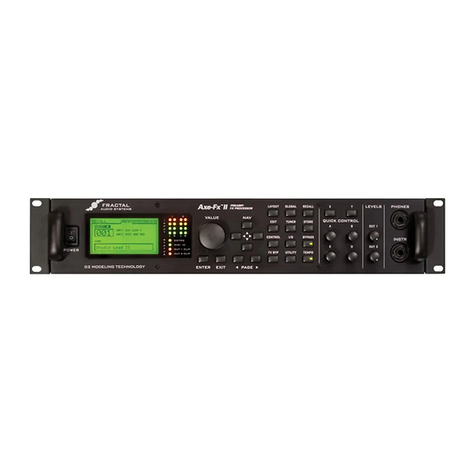Foreword
3
Foreword
Shortly after the advent of the electric guitar and the amplifier, guitar players began
to experiment with altering the basic sound of their instruments. Amplifiers soon
began toincorporate springreverb units and then tremolos and overdrive circuitry.
Never satisfied, guitarists yearned for even more sonic possibilities and the effect
pedal was born. These early pedals were based on discrete semiconductors and
consisted of wah-wah,distortion and other simple effects. Although crude, folklore
has exalted these early pedals to the point where some feel they were endowed
with almost mystical properties due to their germanium transistors or the particular
manufacturer of inductors.
With the introduction of the integrated circuit (IC) in the late 1960's designers could
now realize more complicated effects. Notable among these were the operational
amplifier and later on the bucket-brigade delay line, the latter allowing compact
time-basedeffectstobecomeareality. Bythe1970'samyriadofeffectpedalswere
available to the musician from many different manufacturers. Chorus, phaser and
flanger effects became ubiquitous and pervaded the recordings of the time. Many
of these pedals were noisy and lacked fidelity, the analog delay lines contributing
to significant signal degradation.
As technology marched on and IC's became ever denser, a new paradigm was
thrust into the spotlight: digital. Digital effects, it was promised, would offer far
superior performance: zero noise, nearly infinite delay times, pristine reverbs, etc.
Soon the multi-effect was born. In a single rack-mounted unit the guitarist could
have the equivalent of a dozen different effect pedals. Competition was fierce with
each manufacturer trying to one-up the other by cramming more and more into
their boxes. Ultimately, and unfortunately, this has led to digital's demise.
As engineering gave way to marketing, many soon began to question the
Emperor's new clothes. Pricing pressures and cost cutting forced engineers to use
low-grade components and inferior algorithms, and the quality of the effects
suffered. Grainy, cheesy, noisy. No doubt many have heard these terms when
referring to digital effects. Soon, many guitarists rebelled against digital effects and
analog pedals have now enjoyed a renaissance. Old analog pedals are prized and
sought among vintage collectors. Musicians have ditched their rack processors in
favor of a board full of individual effect pedals.
But this is a pity. For digital does not have to carry the stigma that it does. Digital
is, in fact, quite capable of delivering the benefits that were originally touted. And
now, more than ever, can this be realized, as modern Digital Signal Processors
(DSP's) are not only incredibly powerful but relatively inexpensive. The quality of
digital audio is hard to refute. Just witness CD and DVD players, MP3 devices and
computer audio in general all of which use digital processing. Furthermore, digital
offers the convenience of multiple simultaneous effects, programmability and
superior control.
